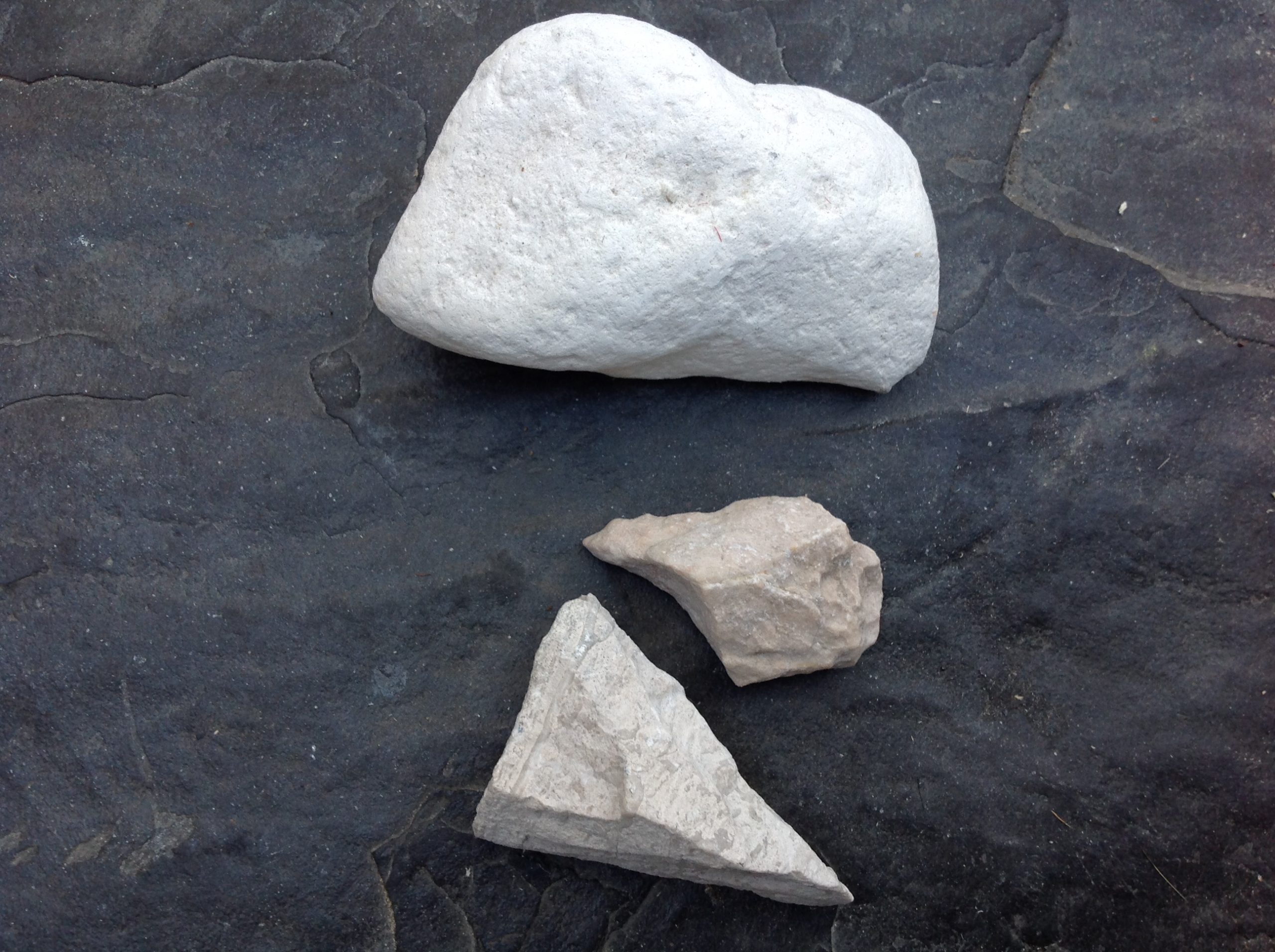
Stoneware and porcelain glazes are made up of at least four ingredients: silica, feldspar, whiting and clay. This is what they look like in their raw mineral forms. Silica is ground flint or quartz, usually from sand or sandstone. These are large pieces of milky quartz from a vein in igneous rock.

Silica has a high melting temperature. In order to melt in a kiln, it needs a flux. The main flux in stoneware and porcelain glazes is feldspar, found in granite, an igneous rock composed of the minerals feldspar, quartz and mica. This piece of granite from Devon has both muscovite (silver, sparkly) and biotite (black, crystalline) mica. The dark vein is mafic rock, high iron and magnesium. Granite forms when molten magma cools and solidifies. The darker minerals solidify first, then the feldspar and finally the quartz, often in large veins running through the rock. Slow cooling, deep in the earth’s crust results in large crystal size.

Clay contains both alumina and silica and is added to increase viscosity to prevent the glaze from running off the pot when molten in the kiln. Clay also helps to keep the heavier quartz and feldspar suspended in water in the glaze bucket.

Calcium carbonate added in the form of whiting is an extra flux which helps to stabilise the glaze and can also produce a matt glaze surface. Whiting is ground up chalk or limestone.

